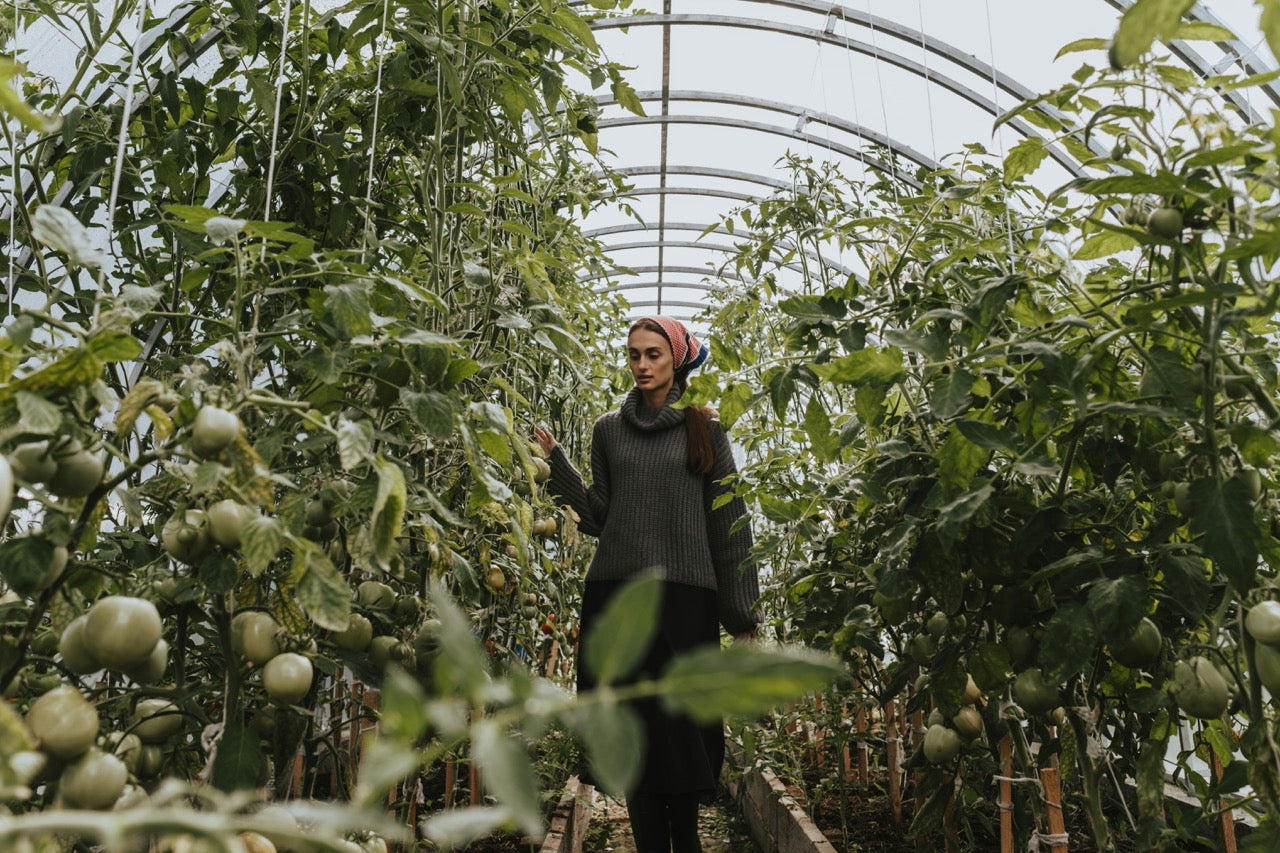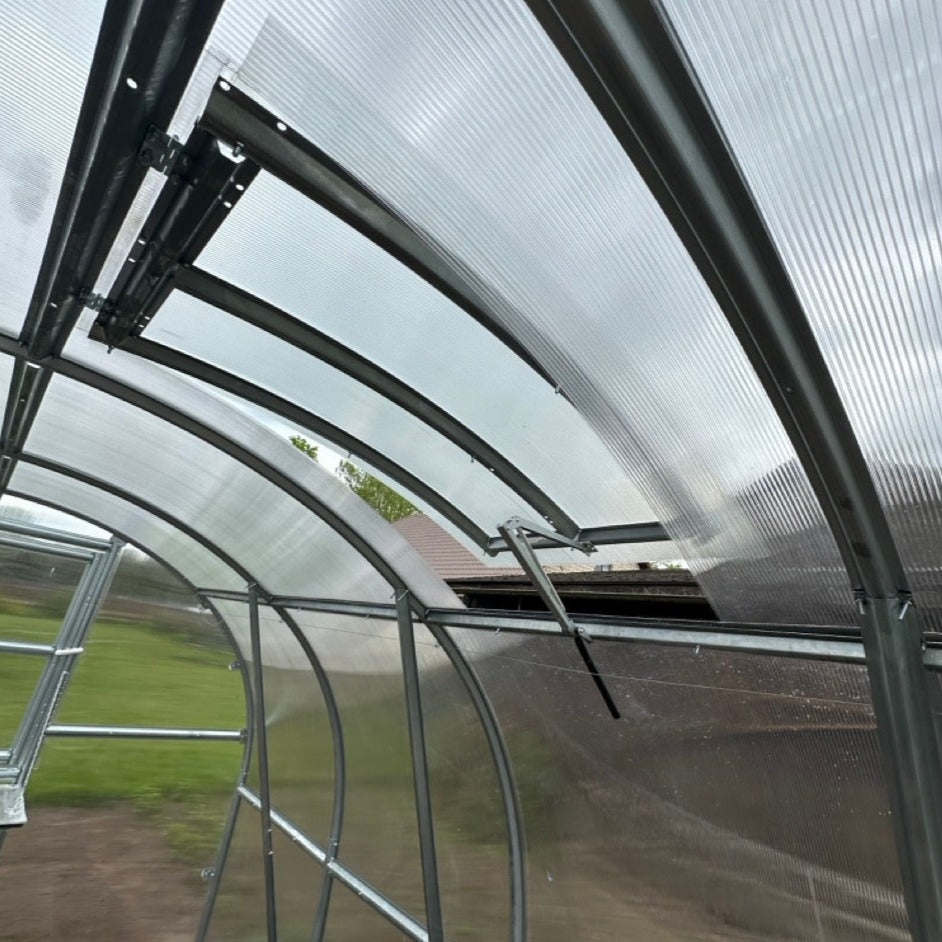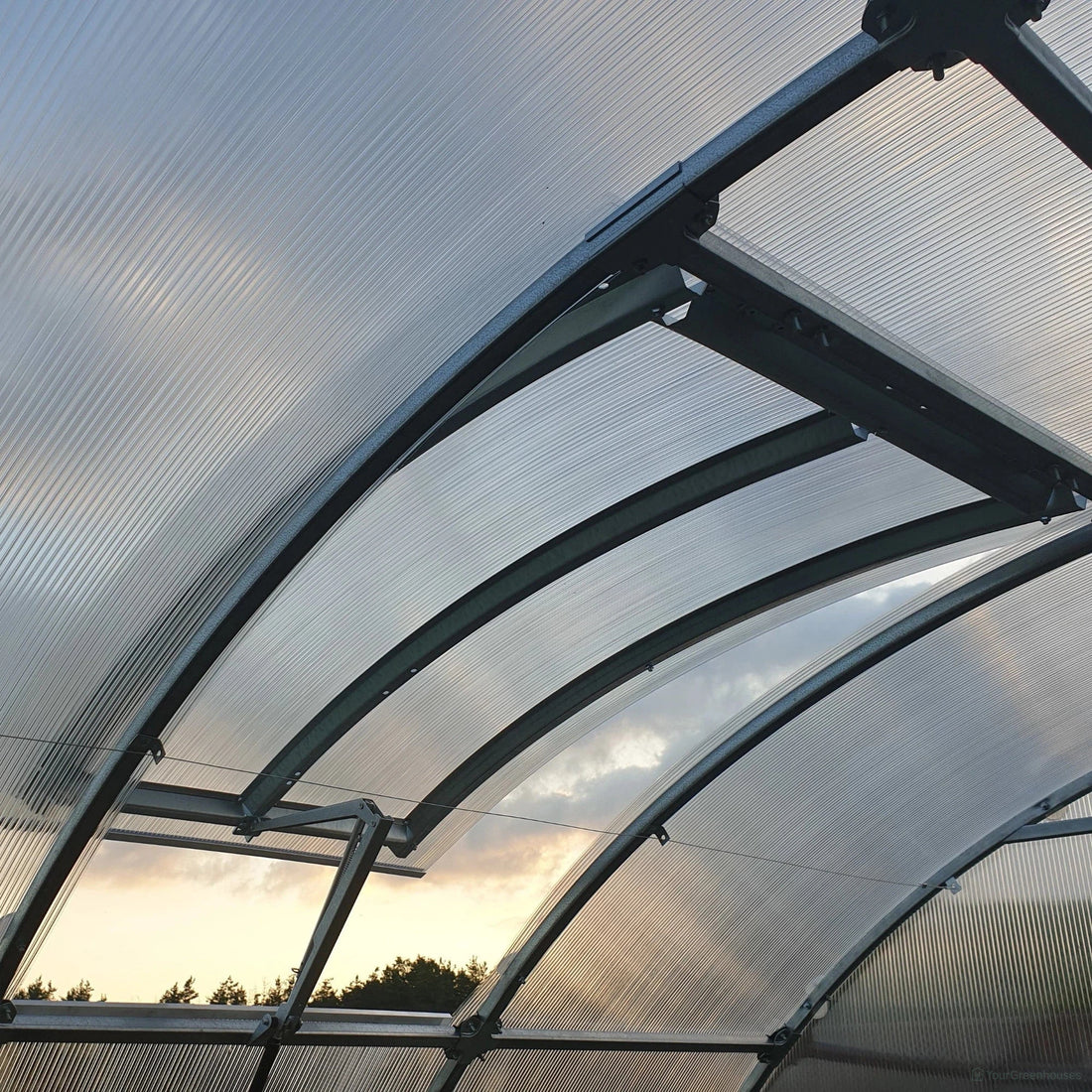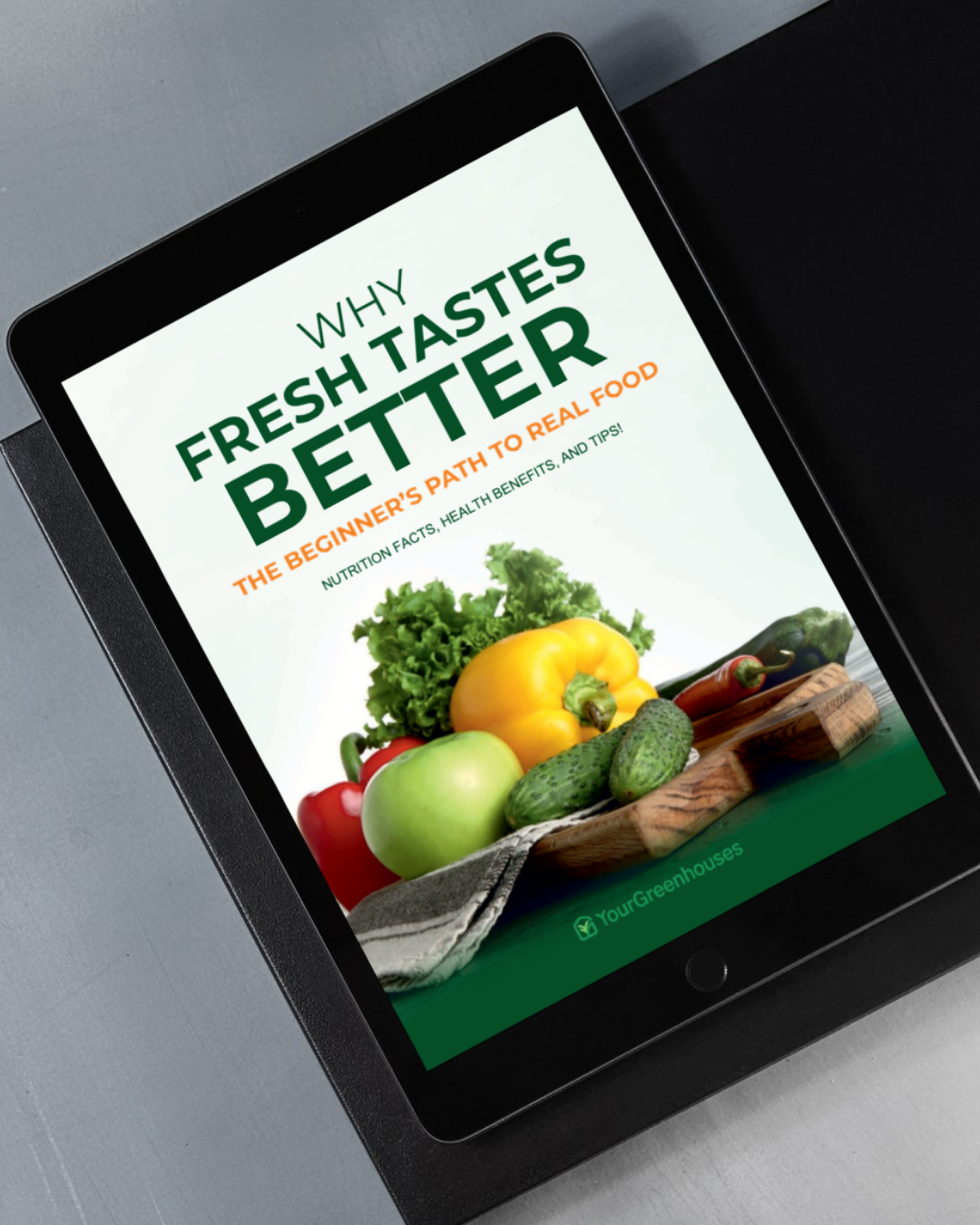There's nothing quite as exciting as preparing your garden for the oncoming arrival of a greenhouse. After all, it’s among the most important garden purchases many gardeners will ever make.
However, buying your first greenhouse can be a minefield. You see, the market has a variety of options, but most importantly, the outlay of any greenhouse is significant, and you don’t want to be reminded or restricted by any misjudgments you made during the purchase phase.
Therefore, you must make the right choice the first time.
Fortunately, you don’t need to beat yourself about it; we've prepared a simple guide on choosing your first greenhouse. We'll walk you through everything you need to know to choose the perfect greenhouse for your needs.
5 Key Factors to Consider When Choosing a Greenhouse
1) Size
The size is among the biggest considerations to make when selecting a greenhouse. Generally, a greenhouse size is usually limited to the available space in your garden.
But space aside, you must also consider your current and future plant-growing needs. You see, a big mistake many gardeners make is failure to consider their future plant-growing needs. Instead, they only consider their immediate growing needs.
Of course, it makes much more sense to go small when starting, but you should also think ahead. Don’t fall into the trap of wishing you had a bigger greenhouse later.
The thing with greenhouses is that the moment you get into growing and start planting, you’ll be surprised at how quickly you reach the limits of your greenhouse. With time, you may also want to grow more and other plants.
Actually, you’ll hardly speak to a gardener who thinks their greenhouse is too big. They wish they had gone bigger.
Our suggestion is you pick a reasonable size for your plant-growing needs, and then double it if possible! A bigger size range than the actual size is much better so you can keep the extra space for further purposes in the future. Plus, larger greenhouses provide better value and are known to have smaller temperature fluctuations.
2) Consider the Greenhouse Lighting
Light is necessary for the life and growth of plants. Optimizing the use of light in greenhouses helps to improve the quality of plants and maximize production. In some ways, light is considered as a production factor.
However, like everything in life, too much of anything is harmful. Excessive light on your plants is as harmful as too little. Exposing your plants to too much direct sunlight can result in the paling/browning of leaves and eventual death.
Often, natural sunlight is enough, but even then it can sometimes get too intense for some plants in terms of light and temperature.
Therefore, if you plan to keep your greenhouse in an area in the direct path of sunlight, consider a greenhouse with a diffused lighting system to avoid over-exposure. Greenhouses constructed out of polycarbonate or plastic are great for this as they only allow diffused light.
On the other hand, if you’re planning to keep your greenhouse in a shaded area, away from direct sunlight, consider a transparent greenhouse. Glass greenhouses allow better penetration of light.
Either way, before you pick a greenhouse, understand where you want to set it up, and how the sun impacts that spot.
3) Think About the Weather

Greenhouses are usually designed based on regional weather patterns. Each greenhouse setup is unique, and designed with the local climate in mind.
Usually, how well your greenhouse can stand up to different weather conditions boils down to the choice of material used. When selecting your greenhouse, there are some additional material details you should consider based on the existing weather conditions.
Here are some details to keep in mind:
- Structure: The structure of your greenhouse is important, especially if you live in an area with heavy snow loads and strong winds. Polycarbonate and high-density polyethylene greenhouse frames are great options to consider. They're shatter-resistant and offer stronger insulation than glass.
- Insulation: Proper insulation is crucial for retaining heat and preventing loss. The ideal greenhouse for cold temperate regions should expertly blend sturdy construction, superior insulation, and efficient ventilation. Double-walled plastic greenhouses are also effective at retaining heat.
- Ventilation: If you live in an area with high levels of humidity, you must consider a greenhouse that can control humidity levels and prevent the buildup of excess moisture. Greenhouses with vents or fans are handy in providing adequate airflow while avoiding drafts.
Overall, by taking the time to research your existing weather conditions and patterns, you can ensure that your first greenhouse is a success.
4) Local Regulations
When choosing your greenhouse, you also need to familiarize yourself with the local zoning laws and regulations concerning greenhouses and what can be legally grown in them.
Generally, zoning deals with land use. In some communities, for example, they require you to include a site plan, showing the location of your greenhouse on your property and its relation to other structures and property lines.
You may also be required to address the traffic flow, buffers, and signs. Some communities also define the type and size of structure allowed.
Ultimately, the existing local regulations will influence the type and size of greenhouse that you can set up in your area.
5) Budget

Finally, you need to consider the budget for your greenhouse or rather how much you're willing to spend on one. Remember greenhouse prices can range from a couple of hundred dollars to several thousands, so having a budget is crucial.
From our experience, the pricing of greenhouses is usually reflective of the quality. However, this doesn’t mean you can’t find quality options at cheaper prices.
The trick is to find a greenhouse that is within your budget, and most importantly, one that satisfies your indoor plant-growing needs. Have a reasonable budget in mind, and find a greenhouse that suits your needs.
Frequently Asked Questions (FAQs)
What Size Do I Need For My First Greenhouse?
The ideal size depends on the number of plants you plant to grow and the available space. However, it’s always good that you go bigger when selecting a greenhouse size. You need to account for your current and future plant-growing needs.
What’s The Best Time to Purchase a Greenhouse?
The best time to purchase a greenhouse is during the offseason, typically in the fall or winter. During this time, prices are often lower, and there is more time for installation and preparation before the growing season begins.
What Greenhouse Structure is Suitable for My Location?
The ideal greenhouse size depends on the existing weather conditions in your area. For example, if you’re in a windy area, you need a greenhouse with sturdy and wind-resistant frames. On the other hand, if you live in areas with extreme temperature variations, you may need some form of ventilation or cooling system.
What are the Different Types of Greenhouses Available for First-time Buyers?
The different types of greenhouses available for first-time buyers include lean-to, freestanding, and attached greenhouses. Lean-to greenhouses are attached to an existing structure, freestanding greenhouses are standalone structures and attached greenhouses are connected to a house or building.
How Can I Ensure Proper Climate Control Within My New Greenhouse?
To ensure proper climate control within your new greenhouse, you should install a ventilation system to regulate temperature and humidity levels.
You should also consider installing a heating system for colder months and shading for hotter months. Additionally, you should regularly monitor and adjust the climate as necessary to ensure optimal growing conditions for your plants.
Conclusion: Buying a Greenhouse Simplified
Choosing the right greenhouse requires careful consideration. By understanding the key factors outlined in this guide, you can make an informed decision that aligns with your vision for a successful and sustainable greenhouse gardening experience.
Remember that your greenhouse is not just a structure; it's a gateway to a world of possibilities for cultivating plants and enjoying the rewards of homegrown produce and vibrant blooms.
Now, if you’re still having a hard time selecting your first greenhouse, you can turn to Your Greenhouse team. We offer some of the top-rated and quality greenhouses in the market. Our greenhouses are built with quality in mind and will help you achieve your gardening dream.












